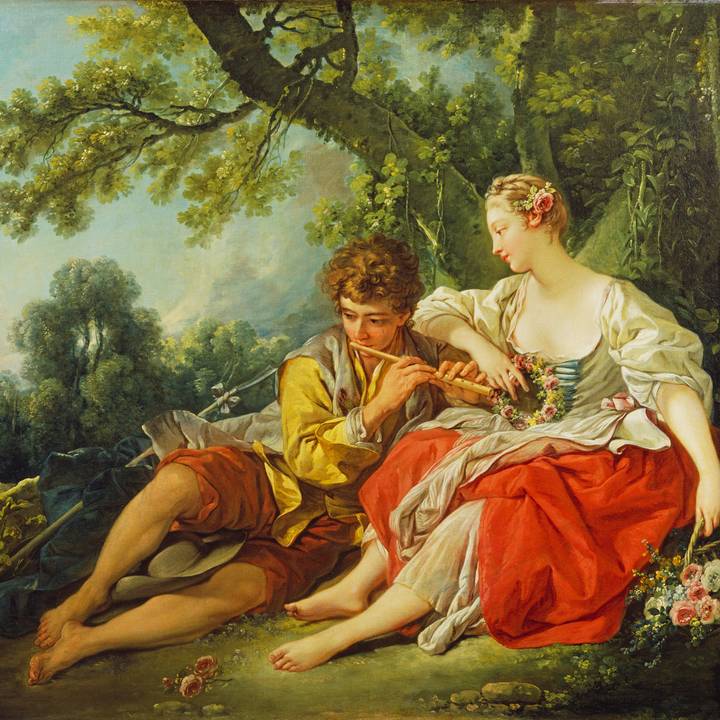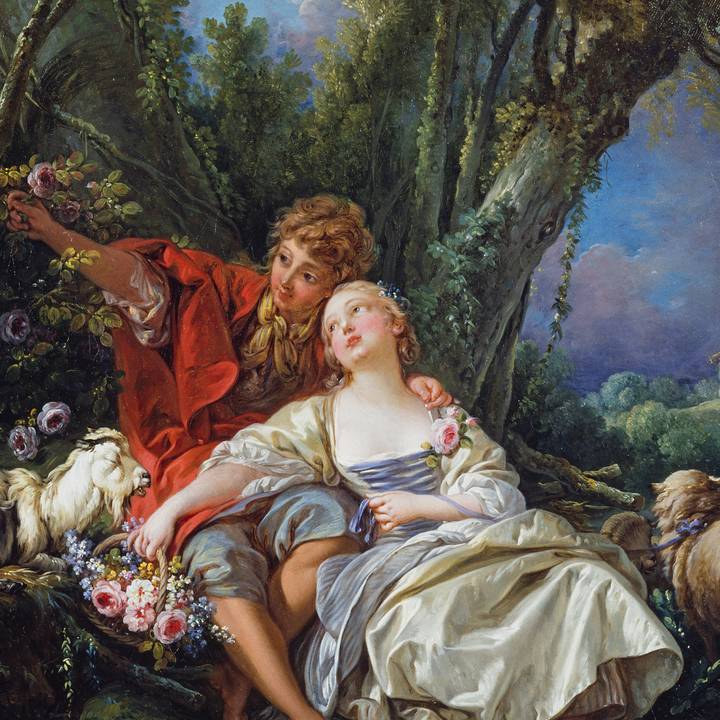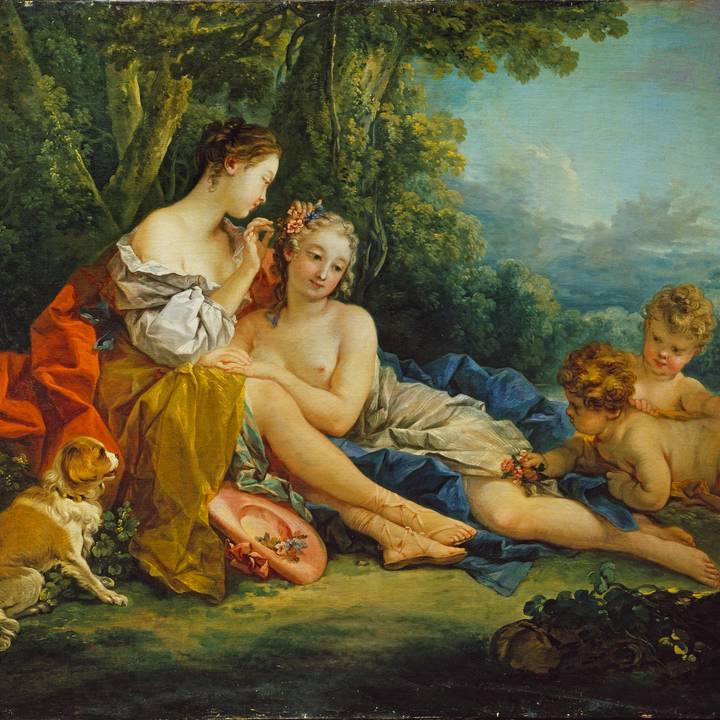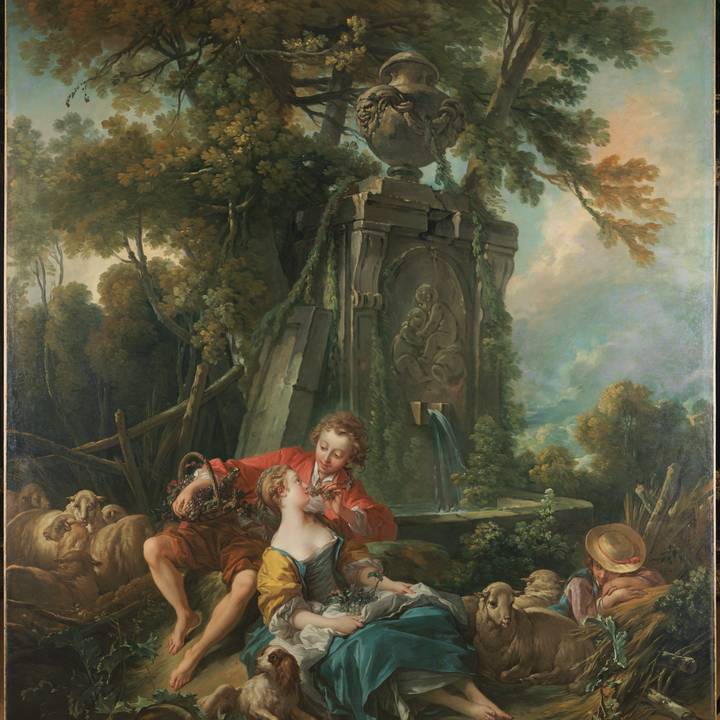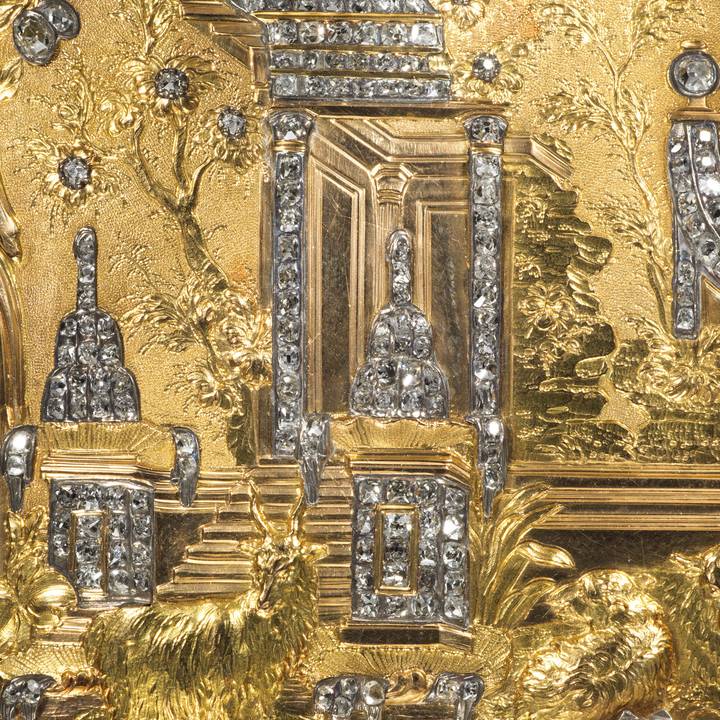Central to Francois Boucher's (1703-1770) oeuvre are his enchanting pastoral paintings, offering a respite from the complexities of 18th-century urban living. Boucher masterfully transports viewers to idealised countryside settings imbued with romanticism and whimsy. In Shepherd and Shepherdess Reposing, the simple charm of shepherd life is captured amidst lush landscapes and delicate figures.
Boucher's mastery of the pastoral is intertwined with his longstanding connection to the theatre. As a protégé of the theatrical designer Jean-François Blondel (1705-1774), Boucher infused his paintings with a sense of drama and spectacle. His compositions often resemble stage sets, with carefully arranged figures and meticulously crafted backdrops, creating a sense of illusion. His penchant for theatricality extended to his use of vibrant colours and delicate brushwork, giving his paintings vitality and movement.
Boucher's portrayal of the pastoral also had subtle sensuality, as evidenced by the graceful poses and languid gestures of his figures. His depictions of amorous encounters and flirtatious encounters added an element of intrigue and romance to the pastoral narrative.
